 Stony Point, Albemarle County, Va. Oil on paper, 16 x 20.
Stony Point, Albemarle County, Va. Oil on paper, 16 x 20.
They Told Me Not To Do This
Ronald Reagan, through all his burgeoning MBA programs, told me not to do it. (I know – I taught in one.)
The future Fed chairman, showing me pictures on his New York office wall from his first position of power in Washington, in so many words very kindly told me not to do it.
My dear friend in the new Volvo said, as we were going over the Baldwin Hills, “What makes you think the world needs another ______ ?” I’ve forgotten the end of the sentence – it had to do with publishing The Wall Paper, about which he advised: Don’t.
My colleague going back to grad school after a few years of struggling in the workplace said, “Why waste your time?”
Howard was – is – emphatic.
Former girlfriends confided that their mothers had predicted better things for me. Or expected better things of me, I’m not sure which.
Suze Orman says – well, you can just imagine.
[Made that one up, of course.]
Advisors have sent me resumes of professional artists, to suggest the career path.
American Express commercials told me not to do it. They’re still telling me not to do it.
I must admit, even I have told myself, more than once, not to do it. In the very notebook in which I’m writing this, as I sit in the back yard five minutes before sunset, there is an entry that reads:
“Great Barrington, Mass., August 5, 2007. Sometimes painting the sunset every day seems completely idiotic. I mean, how could it not?”
In the end, the only thing telling me to do it, is it.
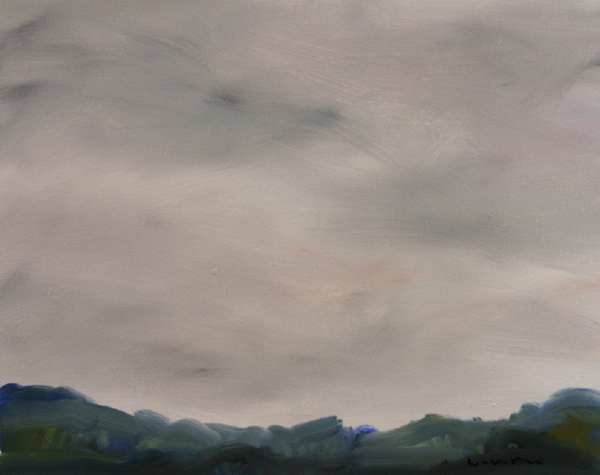 Stony Point, Albemarle County, Va. Oil on paper, 16 x 20.
Stony Point, Albemarle County, Va. Oil on paper, 16 x 20. Sunday, July 5, 2009 at 09:06PM | by
Sunday, July 5, 2009 at 09:06PM | by  BVD | in
BVD | in  Sunset Paintings | tagged
Sunset Paintings | tagged  Albemarle County,
Albemarle County,  Stony Point,
Stony Point,  blackberry winter | | Comments Off
blackberry winter | | Comments Off 
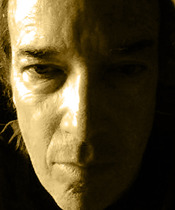
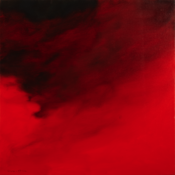
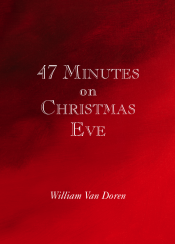
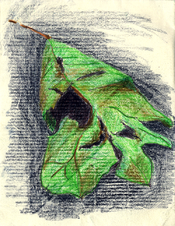


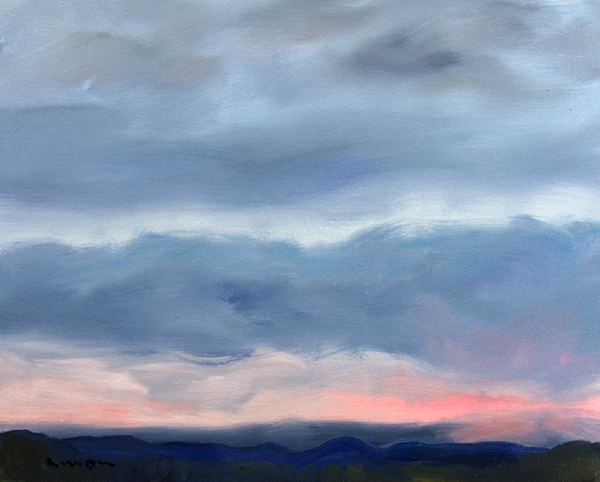

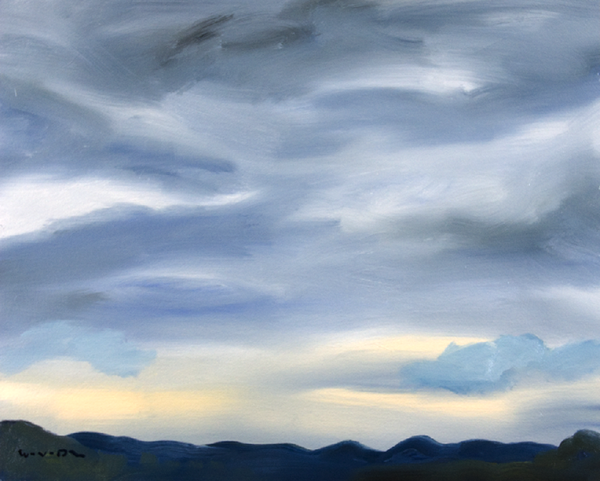
Looking at the Sunset (Part 6)
What I’ve been working up to in this series of posts on ‘Looking at the Sunset’ is two-fold. The immediate purpose and impulse is just to talk about how my view of the sunset – literally the view, what you can see from here – has changed in the more than 14 years since I started. But I find I can’t really describe that without getting into how this began and where it’s going.
I didn’t much notice or care about sunsets and sunrises until not long before I began this series in 1995. It had never occurred to me to paint one, and I’d been painting for more than 25 years. And this is despite the fact that, in Batesville, Virginia, at a place called Port-a-Ferry Farm, the tiny ‘country villa’ I rented for seven years until 1990 had a truly spectacular western view of the Blue Ridge.
But by mid-1993, I was coming to the end of a relatively dark couple of years – sort of like waking up from a long low-grade nightmare. Part of the waking up was sitting outside and watching the sun go down. This was at a house I rented on a farm just four miles from where I’m living now, in the Stony Point area of Albemarle; the rickety narrow side deck offered a great view of the sunset.
Then I moved to Glendale, off Scuffletown Road in Orange County – another rental, but a 400-acre farm where my nearest neighbors were one mile in any direction. (Have I mentioned being a bit of a recluse?) Believe it or not, this was the view from my front door:
However, that view was to the east, and even though there were some beautiful sunrises, my state of mind early in the morning tended to be more one of just trying to wake up than of reveling in the wonders of the world. To the west, in back of the house, a large wooded hill reared up and blocked out the sunset. To my surprise, I found this kind of irritating – I hadn’t reckoned on not seeing sunsets or on caring whether or not I did. I even went to the trouble a few times of climbing the hill to see what I could see, but couldn’t see much.
After one year, in May 1995, Glendale had been ‘sold out from under me’ – as we powerless renters like to say. I found the place where I’m living now, back again in Stony Point, in Albemarle County. (I met Laura six months later and we’ve been living here since we married in June 1997. Our nearest neighbor is much closer than mine were at Glendale; but then, this is the only house on more than 1,000 acres.)
One of the first things I noticed, just after moving in, was the sunset from the back yard. The sun went down behind wall-to-wall Blue Ridge – big sky, big earth. Soon I started thinking I should just go out and paint the sunset.
Part of the motivation – the part that didn’t come simply from the view itself – was that I was only an occasional painter – or better put, as they say in baseball, a streaky one – and strangely slow and deliberate. I would start out fast, and in those initial hours seem to come very close to something exciting and finished, then settle into months of elaboration – glazings and subtle revisions – which might work out very well, yet the result would not have quite the same energy I’d started with. I was like a general who carries the field right up to the adversary’s HQ, but then stops and digs trenches. Given that situation, the sunset seemed like a way almost to trick myself into painting more often and painting more freely and quickly.
In a sense, I started painting the sunset because, here, I could see it – ‘because it was there.’ I think the part of my impulse that I tend to discount is how my relationship with this fundamental daily fact of life had already affected me. That’s an aspect of the series that I’m still uncovering.
On top of the simple decision to paint sunsets there’s the further question of painting them every single day, which I didn’t start doing til September 1997. When I was painting my first sunsets, in June 1995, a visitor suggested perhaps doing them every day. It sounded crazy – or actually not so much crazy as scary, because of the commitment involved – but I didn’t want to mention that I’d already thought of that. I just didn’t quite have the nerve to start, or maybe I didn’t yet see the sense in it – or sense the sense in it, because the sense is difficult to see outright.
So, back in 1995, the sunset here was pretty plain to see; after all, that’s what prompted me to start. The sweep of the old view is suggested by this very small painting of the sunset of June 21st, 1996, less than 24 hours after the summer solstice:
What’s funny to me is how much the view of the sunset here has changed, how difficult that sometimes makes things – and, in the end, how little it may matter.
I’ve alluded to this change in the view in my posts about the volunteer peach tree and my sketch of the back yard. Since 1995, all sorts of trees and bushes have sprung up along the back: the volunteer peach, a box elder that’s growing a mile a minute, a ‘tree of paradise’ (ailanthus) just behind it that seems to be growing even faster, a volunteer peach tree that isn’t a peach tree just to the left of the box elder (its fruit are more like nectarines but I’m not sure, and they’re exuberantly exuding clear sap), and a sour cherry (aka pie cherry) just in front and to the left of that. These are in addition to the big red oak in the right corner of the yard, a big white oak in the field behind that, a tall dark cedar in the field in the middle of the view, and a truly enormous venerable white oak to the left of the cedar.
(Sorry to go on in so much detail about the contents of our back yard – but I’ve spared you the really picky little details!)
In any case, that trees grow is hardly surprising. What I never thought about, and wasn’t prepared for, was how “the woods” in aggregate get so much taller in what seems like such a short time.
Here’s a funky little schematic of the current view:
(The “garden in ruins” – a big circular space that normally would have at least 30 heirloom tomato plants plus basil, Italian parsley, beans, okra, Florence fennel, cucumbers, sweet peppers, etc. – is a testament to the time demands of blogging and, perhaps even more, to the psychic diversions of hoping any day to find a place we can buy and call our own.)
The kicker – the sockdolager in all of this (just had to use that weird crazy word, which I’ve only ever seen once, in a manuscript by an old friend, Bill Crandall) – the most important factor in this changing view is the woods. I guess I always just thought the woods were what they were – the woods, mature, pretty much unchanging.
But “the woods” must be jumping up quite a bit every year. Who knew?
Meanwhile, as for the growth of the mountains – not so much. In fact, I hear the Appalachians have been taking it on the chin for something like 60 million years.
The result, visually, is that I can’t see as much of what’s going on, or can’t see as easily, as I could at the beginning, resulting in the little dance I once described, in which I sometimes have to bob and weave to see the sun. I may have to stand on the back porch steps to confirm whether or not the mountains are even visible in clouds or haze, and it may require repairing to various upstairs ‘observatories’ to see clearly just where along the mountains the sun is setting.
Now – I really wonder why I needed to tell you any of this, except by way of a sort of personal diary, which is exactly the sort of blog I knew from the outset I did not want this to be. One reason is to indicate that these paintings are somewhat more stylized than they may appear; my purpose has never been, primarily, to record or transcribe.
But further: I believe that somehow these paintings may have more to do with sunset as an event than with sunset as a picture. I suspect a perfectly legitimate series could be done without seeing the sun set – as long as it corresponded in a meaningful way to the event. In the end, like anything else in any of the arts, work stands simply on how and what it communicates.
Meanwhile, I’ll keep looking through the gap between the peach and the box elder.
A little more orientation. Here’s the house:
The perspective for the sunset paintings is usually from directly in back of the house. Sunrise paintings are done from just about where Laura is standing for this shot, looking in the opposite direction. That’s the morning sun in the window. The big red oaks on either side of the house aren’t even mentioned in my schematic, they’re behind me in that sketch. Plus there are three equally large oaks above us here, not in the photo.
Funny thing is, when the old-timers who used to either live here or see their relatives here drop in to visit the old house – and this has happened four times – they always start out the same way: “What happened to all the big trees?” (!!?)
(A fine poem about one of those visits – you have to click on “The Visit” – can be found here.)
Aerial view:
In summer, looking at the sunset means looking almost toward the upper left corner of this picture – or, from my perspective on the ground, toward my right (toward the north). The amphitheater-like curve of the trees in most of my sunsets comes from the fact that the trees are closest on the left and right of the back field, and that field falls away steeply in the middle.